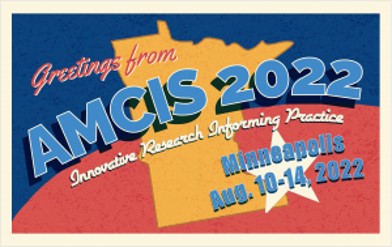SIG - ITProjMgmt IT Project Management
Loading...
Paper Type
ERF
Paper Number
1612
Description
The outcomes of Business Analytics (BA) projects and general Information Technology (IT) projects are very different (Shacklett et al., 2020). If organizations approach the management of BA projects like they would approach general IT projects, it can potentially cause a lot of challenges. Many contextual factors, such as interfaces and processes, and asking the right questions to guide the data analysis, are imperative for the success of BA projects (Kayser et al., 2018). However, the current literature lacks studies to explain the fundamental differences between managing general IT and BA projects. More importantly, very few project managers truly understand what traditional project management (PM) techniques work or not work for managing BA projects. The conventional approach to managing an IT project, such as an ERP or a CRM system, often has pre-defined project requirements and technology specifications (Marchand, 2013). Thus, project managers can build a plan to deliver an IT project on time and within budget. The purpose of managing a BA project is not necessarily to deploy information systems to improve business processes. Instead, BA projects aim to explore and exploit data in new ways. Thus, BA projects cannot be treated like a conventional, large IT project because they are often initiated with a problem to resolve or an opportunity to exploit instead of pre-defined outcomes, required tasks, or detailed plans. This research-in-progress asks two important research questions: 1. What are the similarities in management of business analytics projects compared to managing general IT project? and 2. What are the unique characteristics of managing business analytics projects and why do these pose a problem with use of traditional IT PM techniques? Since the basis for managing either type of project is adoption of various technologies, we use the Technology, Organization and Environment (TOE) Framework (DePietro et al., 1990) as one of the foundational theories. In addition, we use contingency theory to explore the differences in project management practices between the two types of projects. Contingency theory’s premise is that there is no one way to manage as it is dependent on various internal and external constraints. It has been used in IS literature (Andres & Zmud, 2001; Barki et al., 2001) to explore the management of software projects. As there is no established theoretical framework explaining the dynamic changes in the various actions in managing the two types of projects, we chose a qualitative study methodology to fit the exploratory nature of this research. Yin (2008, p. 13) states that this methodology can be used to “investigate a contemporary phenomenon within its real-life context”. The findings will add to both theoretical and practical knowledge in managing BA projects vs IT projects.
Recommended Citation
Wallace, Steven; Iyer, Lakshmi; and Chen, Charlie, "Comparing Management of IT and Analytics Projects: A Qualitative Study" (2022). AMCIS 2022 Proceedings. 5.
https://aisel.aisnet.org/amcis2022/sig_itpm/sig_itpm/5
Comparing Management of IT and Analytics Projects: A Qualitative Study
The outcomes of Business Analytics (BA) projects and general Information Technology (IT) projects are very different (Shacklett et al., 2020). If organizations approach the management of BA projects like they would approach general IT projects, it can potentially cause a lot of challenges. Many contextual factors, such as interfaces and processes, and asking the right questions to guide the data analysis, are imperative for the success of BA projects (Kayser et al., 2018). However, the current literature lacks studies to explain the fundamental differences between managing general IT and BA projects. More importantly, very few project managers truly understand what traditional project management (PM) techniques work or not work for managing BA projects. The conventional approach to managing an IT project, such as an ERP or a CRM system, often has pre-defined project requirements and technology specifications (Marchand, 2013). Thus, project managers can build a plan to deliver an IT project on time and within budget. The purpose of managing a BA project is not necessarily to deploy information systems to improve business processes. Instead, BA projects aim to explore and exploit data in new ways. Thus, BA projects cannot be treated like a conventional, large IT project because they are often initiated with a problem to resolve or an opportunity to exploit instead of pre-defined outcomes, required tasks, or detailed plans. This research-in-progress asks two important research questions: 1. What are the similarities in management of business analytics projects compared to managing general IT project? and 2. What are the unique characteristics of managing business analytics projects and why do these pose a problem with use of traditional IT PM techniques? Since the basis for managing either type of project is adoption of various technologies, we use the Technology, Organization and Environment (TOE) Framework (DePietro et al., 1990) as one of the foundational theories. In addition, we use contingency theory to explore the differences in project management practices between the two types of projects. Contingency theory’s premise is that there is no one way to manage as it is dependent on various internal and external constraints. It has been used in IS literature (Andres & Zmud, 2001; Barki et al., 2001) to explore the management of software projects. As there is no established theoretical framework explaining the dynamic changes in the various actions in managing the two types of projects, we chose a qualitative study methodology to fit the exploratory nature of this research. Yin (2008, p. 13) states that this methodology can be used to “investigate a contemporary phenomenon within its real-life context”. The findings will add to both theoretical and practical knowledge in managing BA projects vs IT projects.
When commenting on articles, please be friendly, welcoming, respectful and abide by the AIS eLibrary Discussion Thread Code of Conduct posted here.



Comments
SIG ITProjMgmt